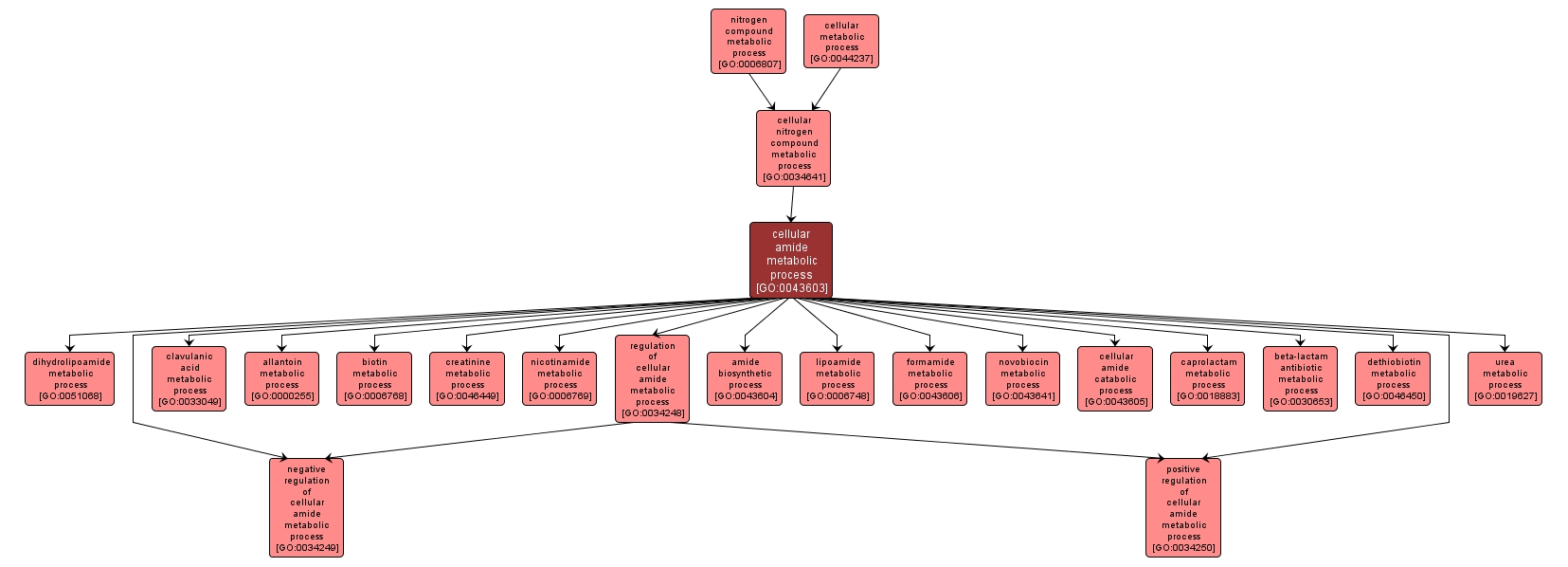GO TERM SUMMARY
|
| Name: |
cellular amide metabolic process |
| Acc: |
GO:0043603 |
| Aspect: |
Biological Process |
| Desc: |
The chemical reactions and pathways involving an amide, any derivative of an oxoacid in which an acidic hydroxy group has been replaced by an amino or substituted amino group, as carried out by individual cells. |
| Synonyms:
|
|

|
INTERACTIVE GO GRAPH
|














